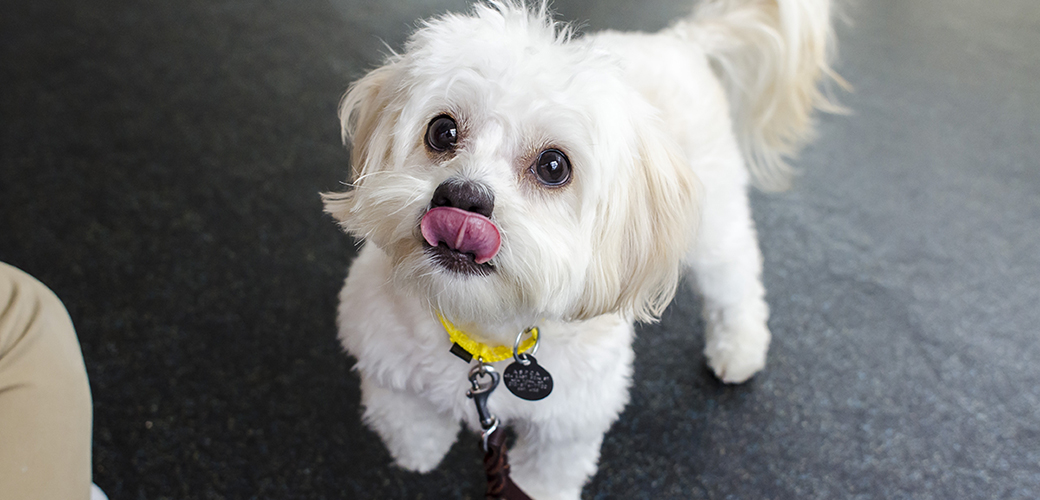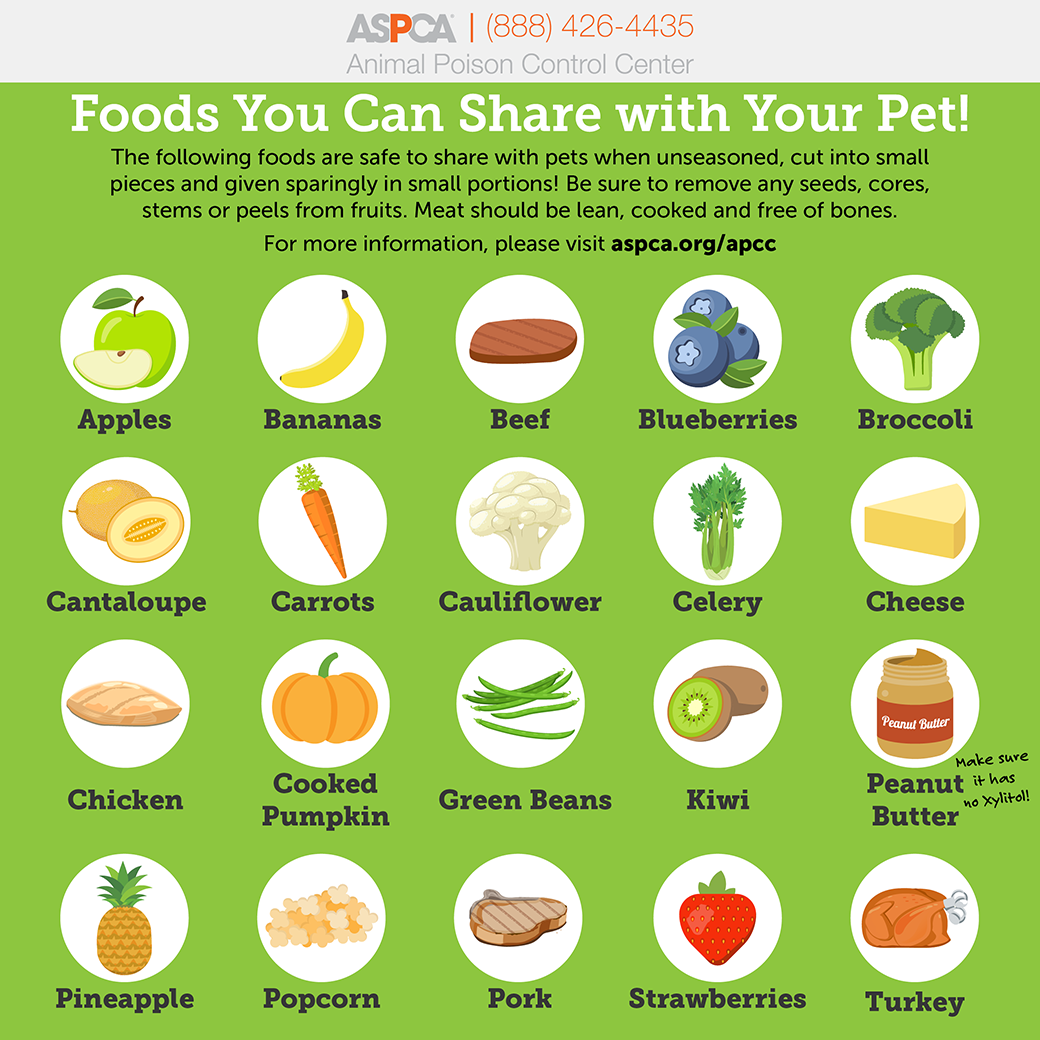

Sharing food with those you care for is often seen an act of love. And of course, our pets tend to be front-runners on the list of those we care for most. Not to mention, they do a great job of letting us know they like our food—from the adorable puppy eyes, to pawing at us or performing the new trick they learned— they certainly can be persuasive.
But as you know, many human foods and ingredients are toxic to pets and can put our furry friends in danger. So how do you know what is safe to give to your pet when you want to give them a treat from your plate? There’s a lot of information regarding what’s safe and what’s not. So, the ASPCA Animal Poison Control Center (APCC) wanted to simplify it a bit by sharing a couple of guidelines that will help you share the right food with your four-legged friends.
Pay Attention to Portion Sizes
Most importantly, your pet should get most of their nutrition from their regular diet. Snacks should equate to no more than five percent of their daily caloric intake, so keep portion sizes small.
Additionally, people food tends to be high in fat and sugar, and too much fat or sugar can lead to inflammation of the pancreas (pancreatitis) that can land your pet in the hospital. Also, be mindful that too much of a food your pet is not used to can lead to some digestive upset.
Once you understand those two guidelines, feel free to go ahead and see what foods your pet likes from the list below!
Pet-Safe Snacks
Vegetables: Veggies such as carrots, celery, broccoli, green beans, cauliflower or cooked (canned) pumpkin are all good snack options. Since vegetables are low in fat and calories, they are a great snack for your furry friend. It’s best to cut vegetables into small bite size pieces to avoid any choking hazards. They can either be offered raw (other than pumpkin) or cooked—just avoid seasonings if you are offering them cooked!
Fruit: Apples, bananas, cucumbers, pineapple, cantaloupe, blueberries, strawberries and kiwi are all okay to give to your pet. Like vegetables, cutting harder fruits into bite size pieces is advisable, as well as removing any seeds, cores, stems or peels. Adding cucumbers to your pet’s water or making a doggie smoothie with fruits makes for a cool summer treat!
Popcorn: Popcorn is a favorite for many pets—and for good reason! Air-popped popcorn is a healthy snack for you and your furry companion and avoids excessive amounts of fat or salt.
Peanut butter: Many pets love peanut butter. Using it as an ingredient in a pet-friendly recipe or as a way to hide medication are some common ways it may be given. There are a limited number of peanut butter products that contain xylitol—a sugar substitute that can be lethal to dogs—so make sure to check the ingredient labels before you give it to your pet. Since peanut butter is also high in fat, it’s best to keep the quantities you treat our pet to on the small side.
Cheese: A small cube of cheese is a great snack and/or pill disguise for your four-legged friend! Make sure to only offer a small piece sparingly as too much can lead to digestive upset.
Meats: Small amounts of lean cooked chicken, turkey, beef or pork that are free of bones and seasoning are also okay. It is best to avoid processed meats like lunch meat or bacon as they are can be high in salt.
Knowing what foods your pet can eat is only half the battle. Be sure to look over the APCC’s full list of foods to avoid sharing with your pet as well. Happy snacking!


If you think your pet may have ingested something toxic, please contact your veterinarian or the ASPCA Animal Poison Control Center at (888) 426-4435 immediately for assistance.
Source: Read Full Article



